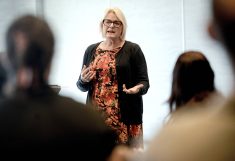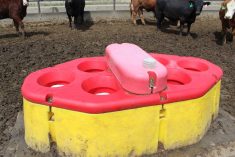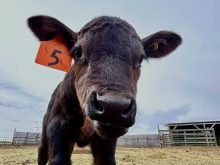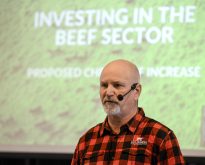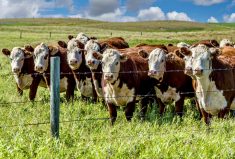Trust and communication are the foundation of Getting Research into Practice (GRIP) for new livestock agri-food technologies and practices.
The challenge, addressed during the third annual Livestock Research Innovation Corporation’s (LRIC) GRIP roundtable on Nov. 14, 2024, is cultivating a common language for knowledge translation and transfer (KTT) and innovation adoption to be successful.
Why it matters: GRIP is a holistic approach to knowledge transfer that requires engagement from producers, industry, academia and government to maximize its effectiveness.
Read Also

Jennifer Hayes appointed for second term as the Chairperson of the Canadian Dairy Commission
Jennifer Hayes has been re-appointed as Chairperson of the Canadian Dairy Commission by Heath MacDonald, Minister of Agriculture and Agri-Food.
“GRIP is not a one-off event; it happens at every stage of the livestock innovation cycle,” said Dr. Angela Straathof, Ontario Soil and Crop Improvement Association’s (OSCIA) research and knowledge transfer director. “Everyone—whether in research, policy, or production—has a role in turning innovation into impactful practice.”
Kelly Sommerville, CEO of LRIC, explained that KTT involves cross-sector and cross-disciplinary partnerships resulting in collaborative innovation that the end user, in this case, the farmer or producer, is willing to adopt and can justify the investment.
For example, OSCIA’s Living Lab’s success hinges on producer participation, willingness, and commitment to work with researchers and trials. Farmers also play a meaningful role as program ambassadors, with a broad spectrum for engagement, knowledge transfer, and storytelling to share their perspective with researchers, farming colleagues and the public.
“A living lab is an innovation project implemented on-farm, supported by research, and it’s a way of developing farm innovations on beneficial management practices, best management practices or innovative management practices,” said Straathof. “It’s a way to move the industry forward through iterative testing of management.”
RJ Taylor of Cedar Crest Trout Farms suggested researchers use industry conferences and direct engagement to connect with farmers and involve them from the outset of the project’s design to understand the research process and set expectations.
“There’s just as much responsibility to involve the farmer in the research process as there is (to involve) the researcher into the farm and the way it works,” explained Taylor. “We all benefit from being part of such a progressive and passionate field. There’s an embedded passion for better animal welfare, sustainability, emissions, helping the planet and growing food for people.”
For example, while academia focuses on the rigour of methodology, grant and research timelines, farmers zero in on the economics related to sustainability, conservation, welfare practices, increased sales or labour shortages, who owns the data, and what is off-limits.
“(Understanding) those processes helps manage some expectations. The concept of who owns the data and what happens to it out there is a little nebulous and confusing,” Taylor explained.
He referenced a recent incident where researchers published an unrelated aspect of a farm’s operations in a peer-reviewed public journal the media could cite, leaving a sour taste in the mouth about working with researchers.
Academically, economic data account for five or 10 per cent of the research, baffling farmers who avoid taking on more risk despite their assumed high-risk tolerance.
Taylor suggested that researchers could increase uptake by offering a whole system approach with a financial incentive or a small-scale risk-sharing program. By starting small, researchers could lower the risk if something goes wrong, encouraging greater research adoption.
Finally, Taylor drove home that farmer-to-farmer experience sharing has a greater reach than any research data, marketing or social media campaign encouraging new technology adoption.
“If you hear a farmer talking about something that’s working, you’re bound to listen. And often it only takes one or two farmers to convince 100 other farmers,” he said. “It’s not necessarily just getting your farmer champion, but demonstrating it on-farm, making sure your case studies are local, and then using tools like social media, podcasts and YouTube.”




